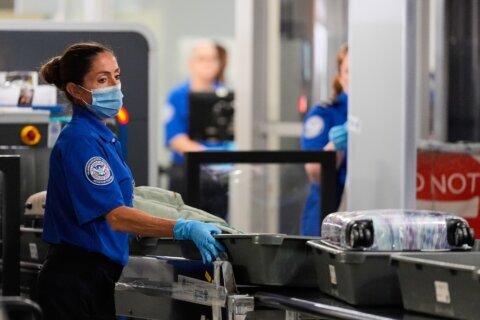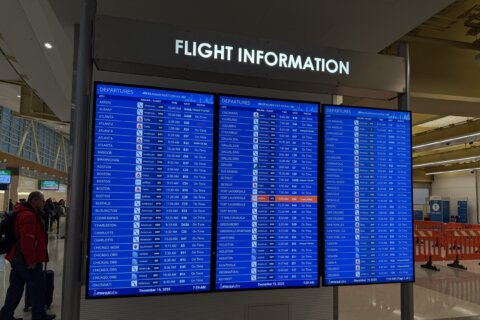Thursday’s near collision at Reagan National Airport is raising concerns about plans to increase the number of flights at the airport.
Virginia Senators Mark Warner and Tim Kaine said Thursday morning’s close call at Reagan National is another reason not to expand the number of flights at the airport as some other senators are attempting to do.
“It’s just plain crazy that some are pushing to add more flights to DCA’s overburdened runway,” Warner said to the Senate Friday.
In February, a Senate committee voted to increase the number of flights in and out of Reagan as part of the Federal Aviation Administration’s reauthorization. It could come up for a vote later this spring.
The near collision occurred when two planes came within 400 feet of each other — a JetBlue plane was taking off and a Southwest flight was attempting to cross an intersection on runway four.
Kaine said the region’s smallest airport is already stretched beyond capacity: “DCA is a fraction of the size of our other two regional airports, Dulles and BWI.”
He said Reagan is designed to handle about 15 million passengers a year, but routinely moves more than 25 million passengers.
Meanwhile, new regulations are going into effect to give overworked air traffic controllers more rest. Air traffic controllers have said for years that mandatory overtime and rotating schedules leave them at risk of possibly making mistakes.
The FAA said new rules will increase rest for controllers from eight hours between shifts to ten hours during the day and 12 hours before starting overnights.
New FAA administrator Mike Whitaker announced the policy Friday.
“I understand this lengthened rest period will be an adjustment for thousands of our air traffic controllers,” Whitaker’s statement said. “We are committed to engaging the workforce and our partners at the National Air Traffic Controllers Association (NATCA) to prioritize health and well-being as operations adapt.”
However, the union that represents controllers, the National Air Traffic Controllers Association, said they were not consulted about the changes.
The union said fatigue is a “serious issue,” and the FAA’s proposed changes could force controllers to absorb further on-the-job exhaustion.
“NATCA is concerned that with an already understaffed controller workforce, immediate application of the Administrator’s new rules may lead to coverage holes in air traffic facilities’ schedules,” the union said in a statement, “Requiring controllers to work mandatory overtime to fill those holes would increase fatigue and make the new policy nothing more than window dressing.”
The union said scheduling agreements for this year were negotiated late last year, and rapid changes could “disrupt the lives of controllers.”
The FAA said the new regulations could be in place later this summer, in as soon as 90 days.
One of the most grueling shifts is called “the rattler.” It’s when controllers work five shifts — two afternoon to evening shifts, two mornings, and one overnight — in four days. In this model, controllers then have 80 hours off before starting again.
The FAA is also hiring more controllers, as older controllers must retire at age 55.
According to the FAA’s most recent figures from last spring, the agency was 3,600 controllers short of its staffing goal.
In November, the air traffic controllers’ union chief told Congress that after subtracting employee losses including retirements, the agency netted an increase of only six controllers in the last year. The agency’s latest budget proposal calls for increasing the hiring capacity from a limit of 1,800 to 2,000 annually.
Get breaking news and daily headlines delivered to your email inbox by signing up here.
© 2024 WTOP. All Rights Reserved. This website is not intended for users located within the European Economic Area.








